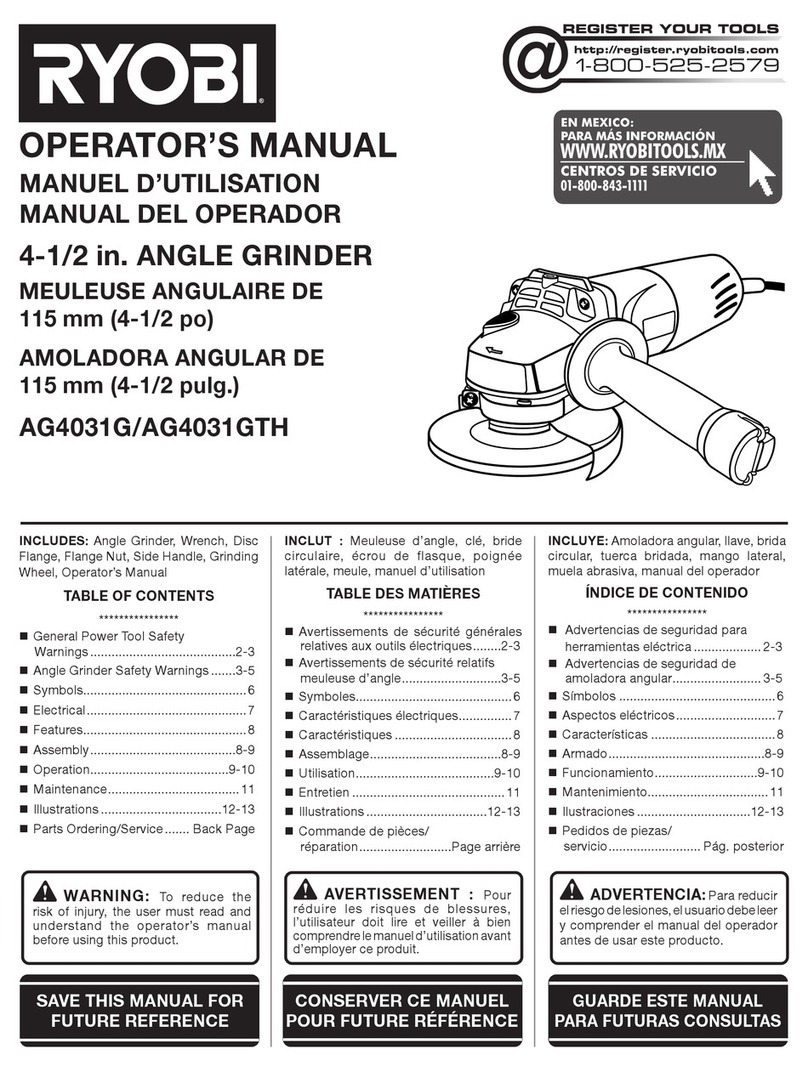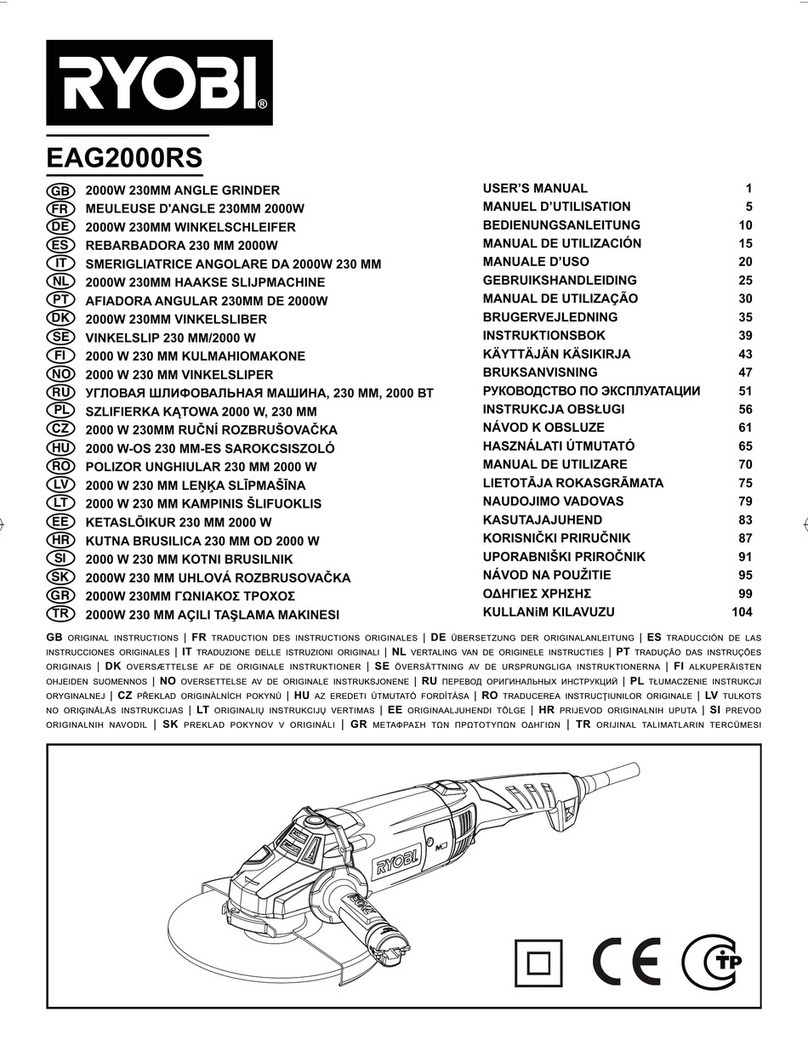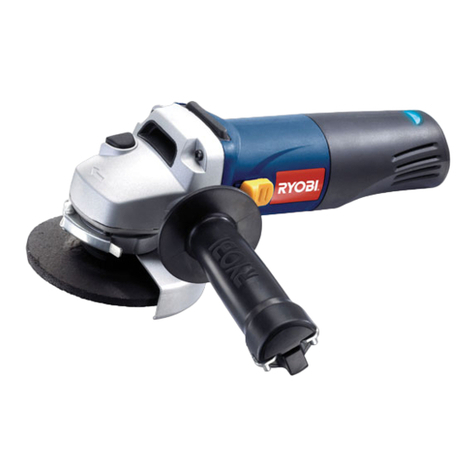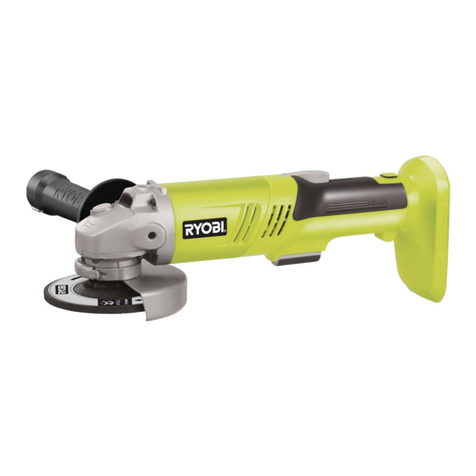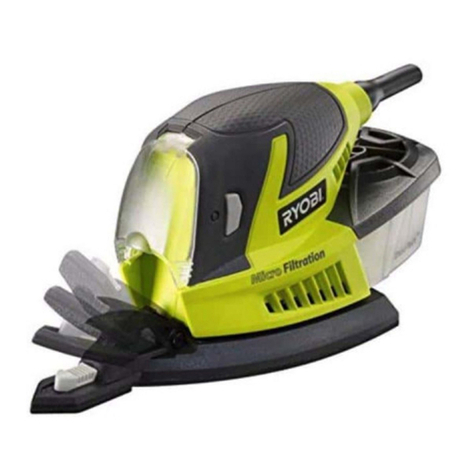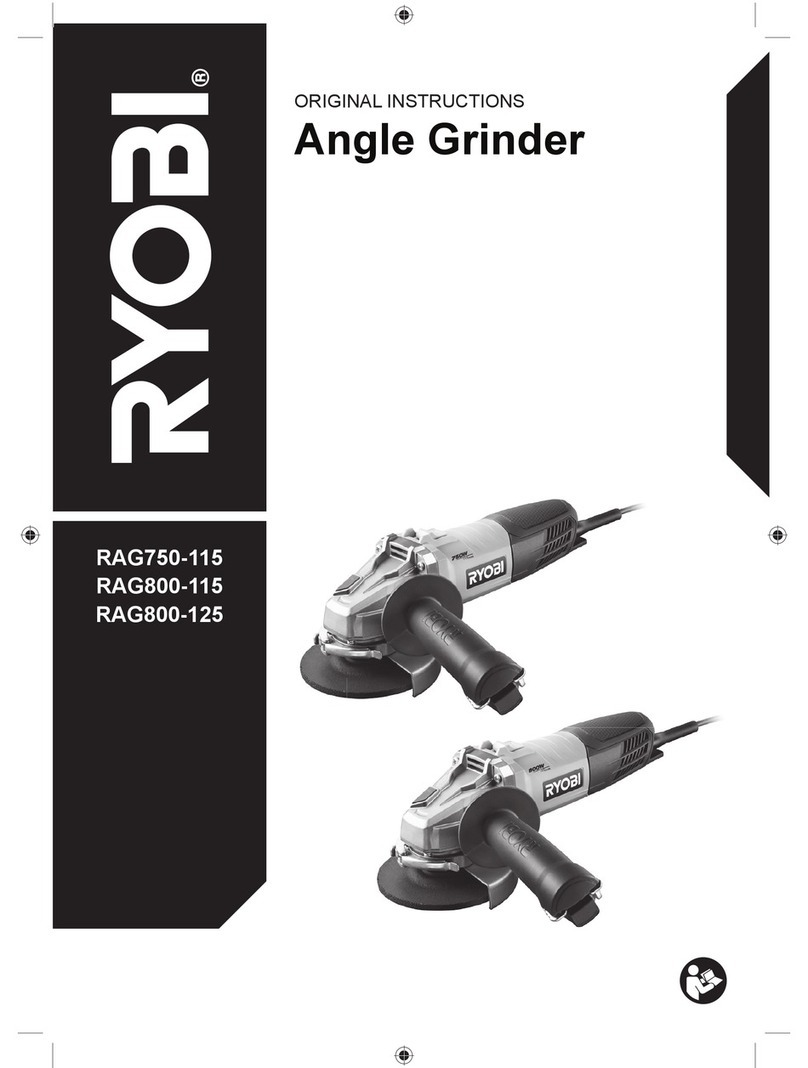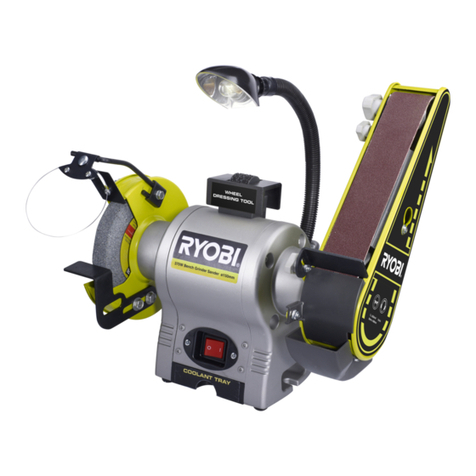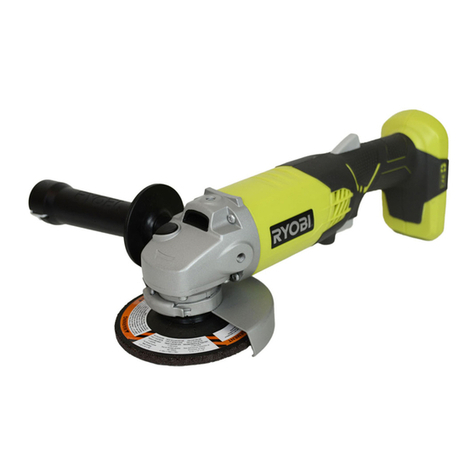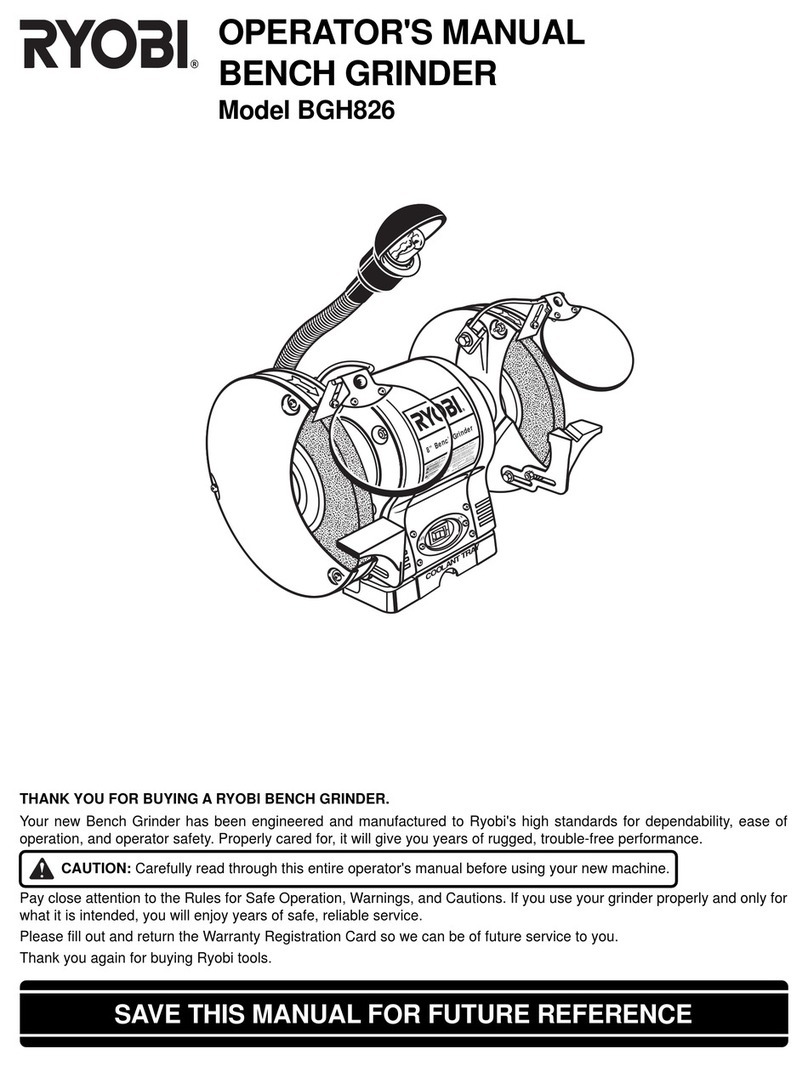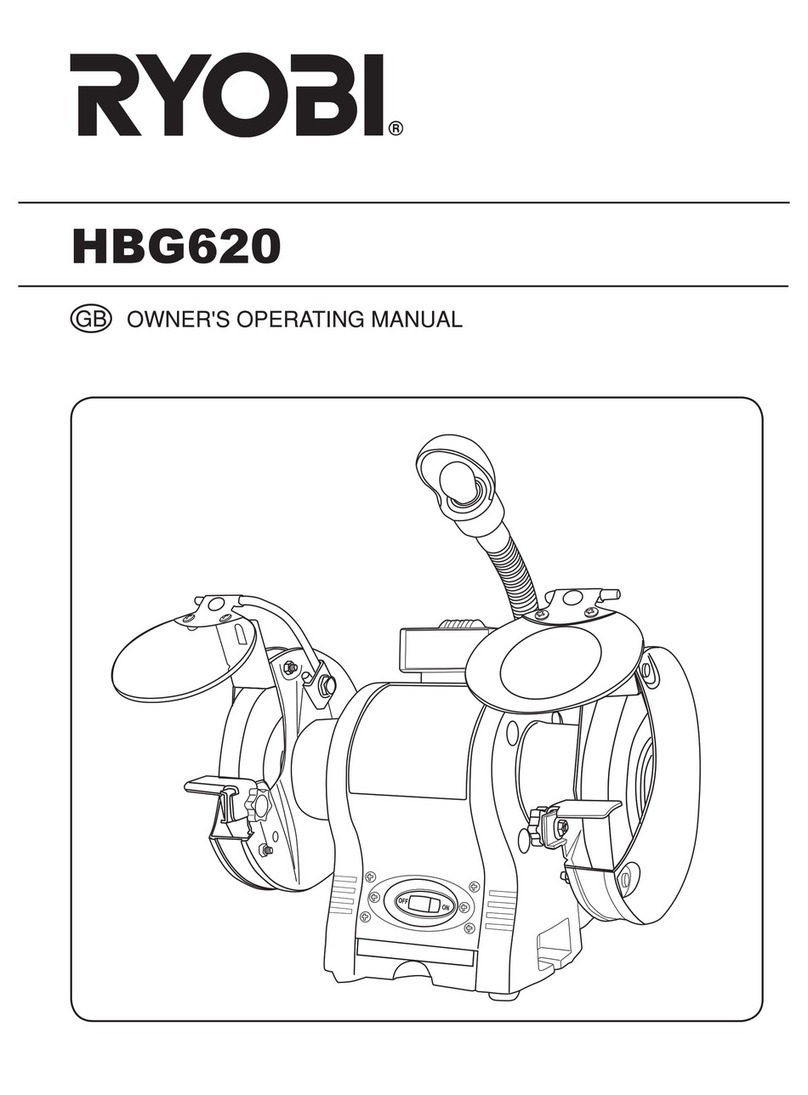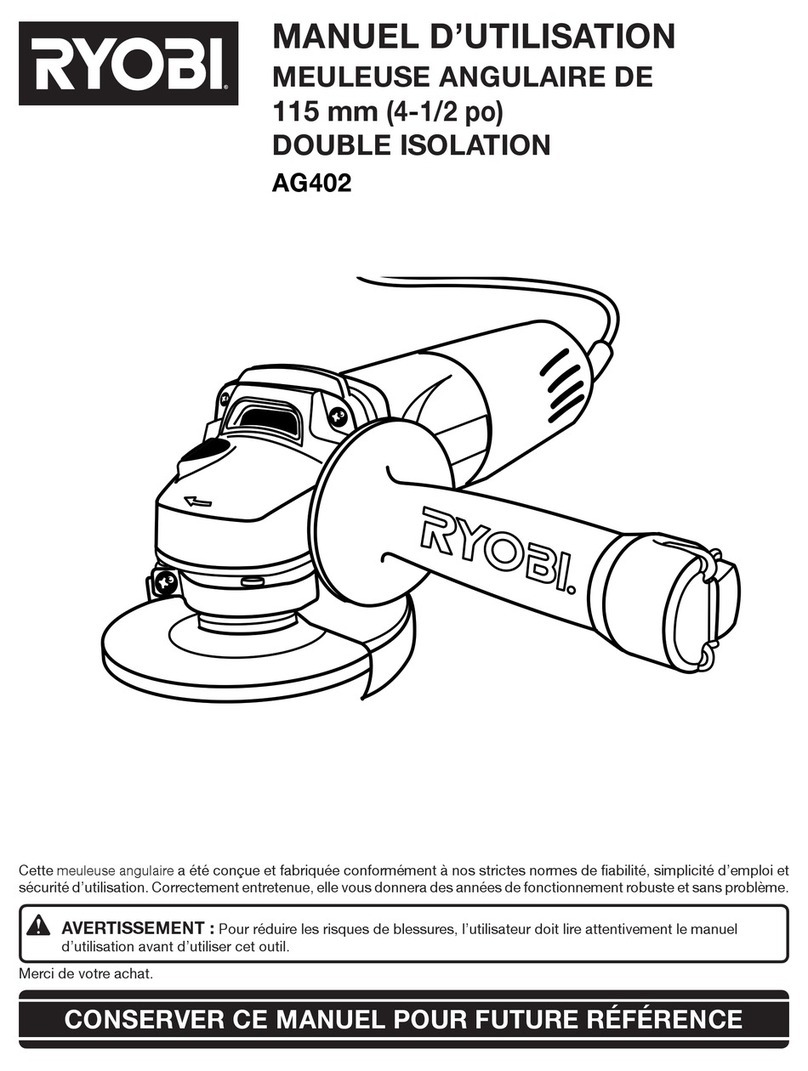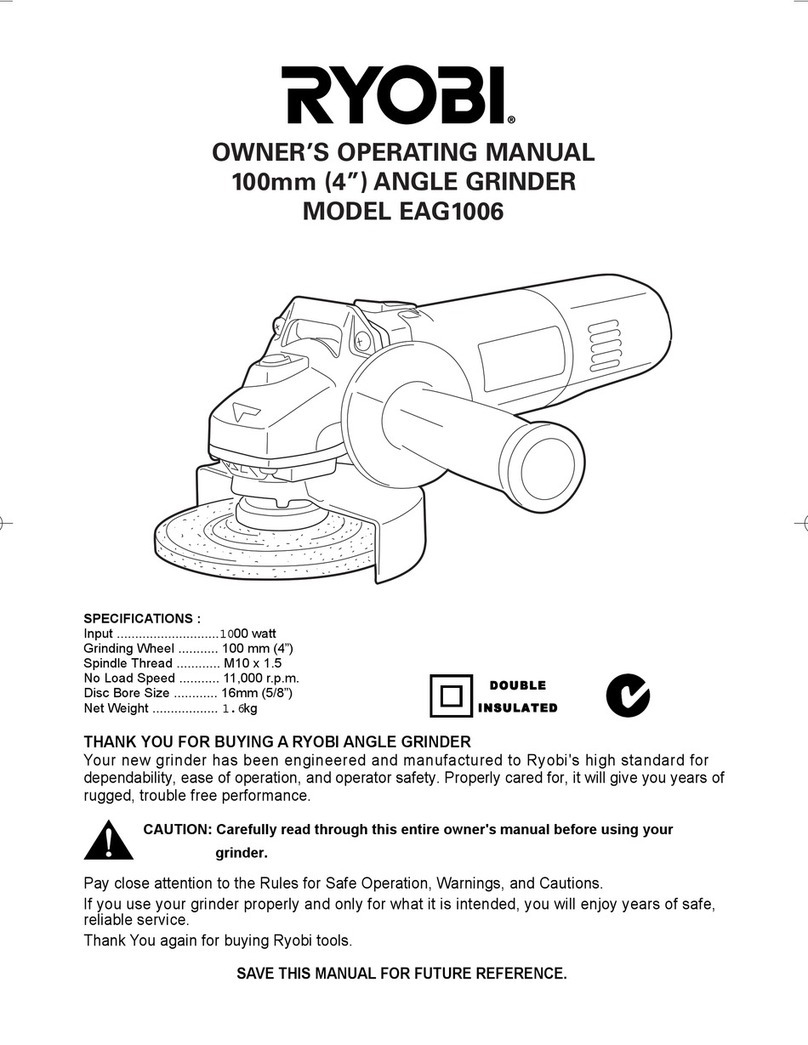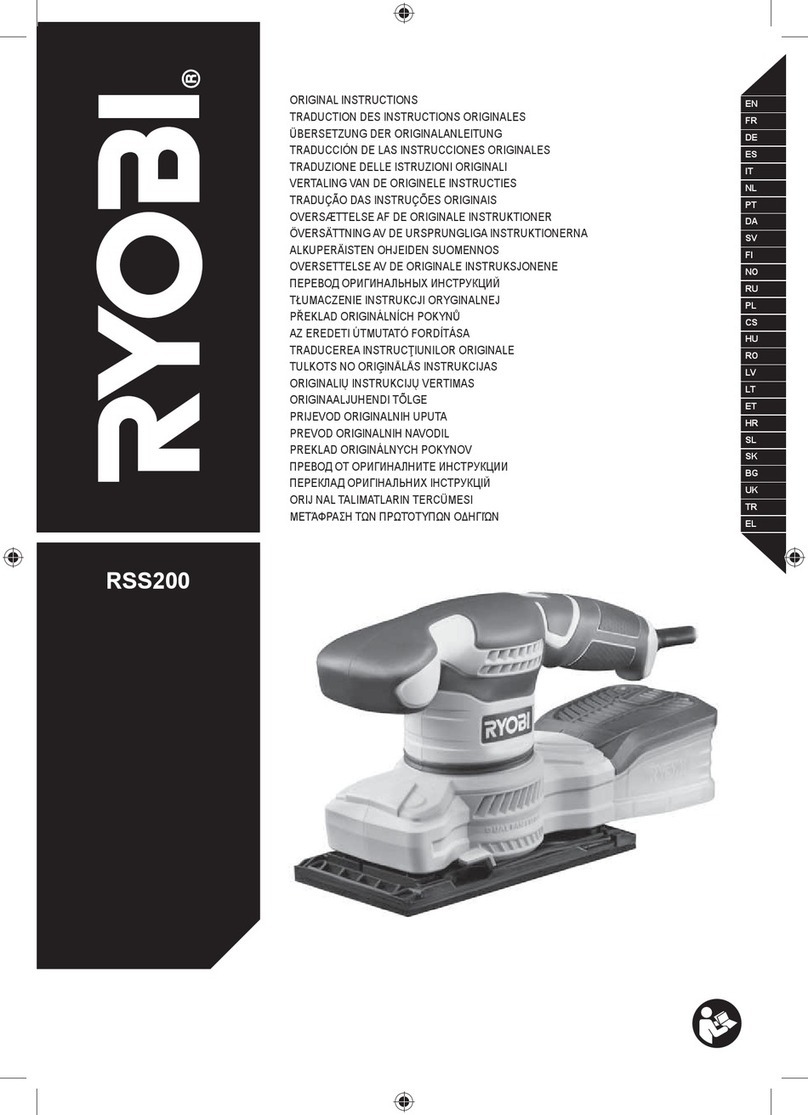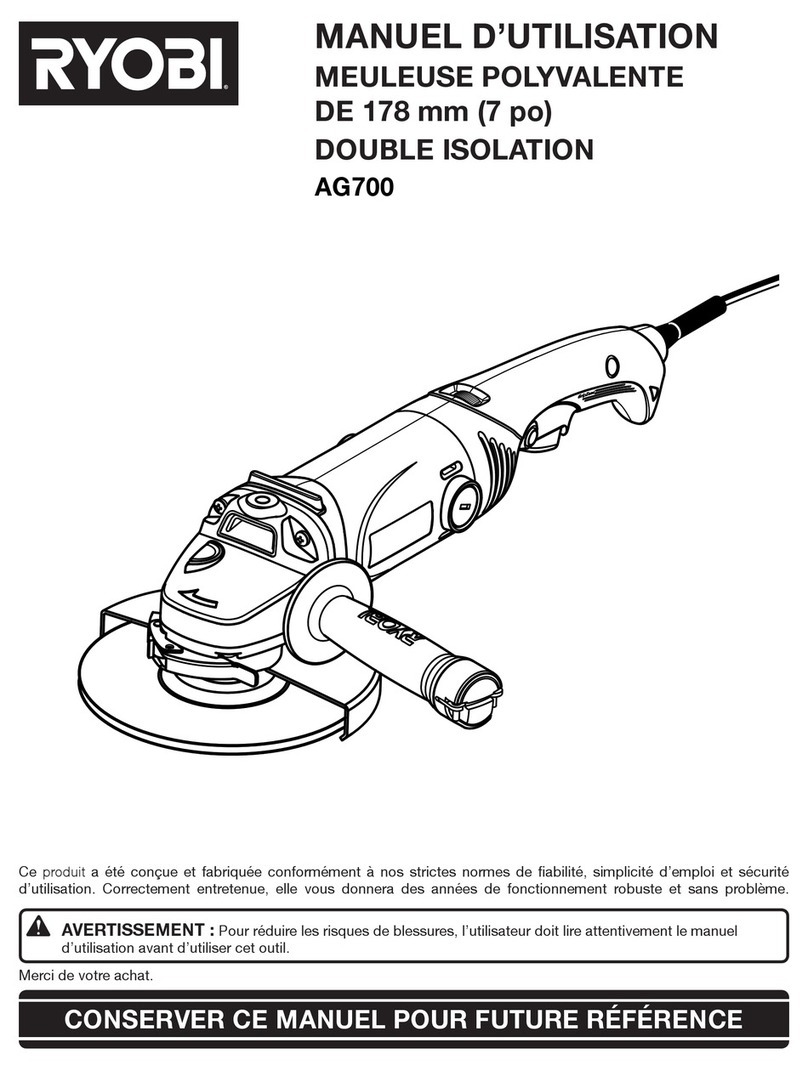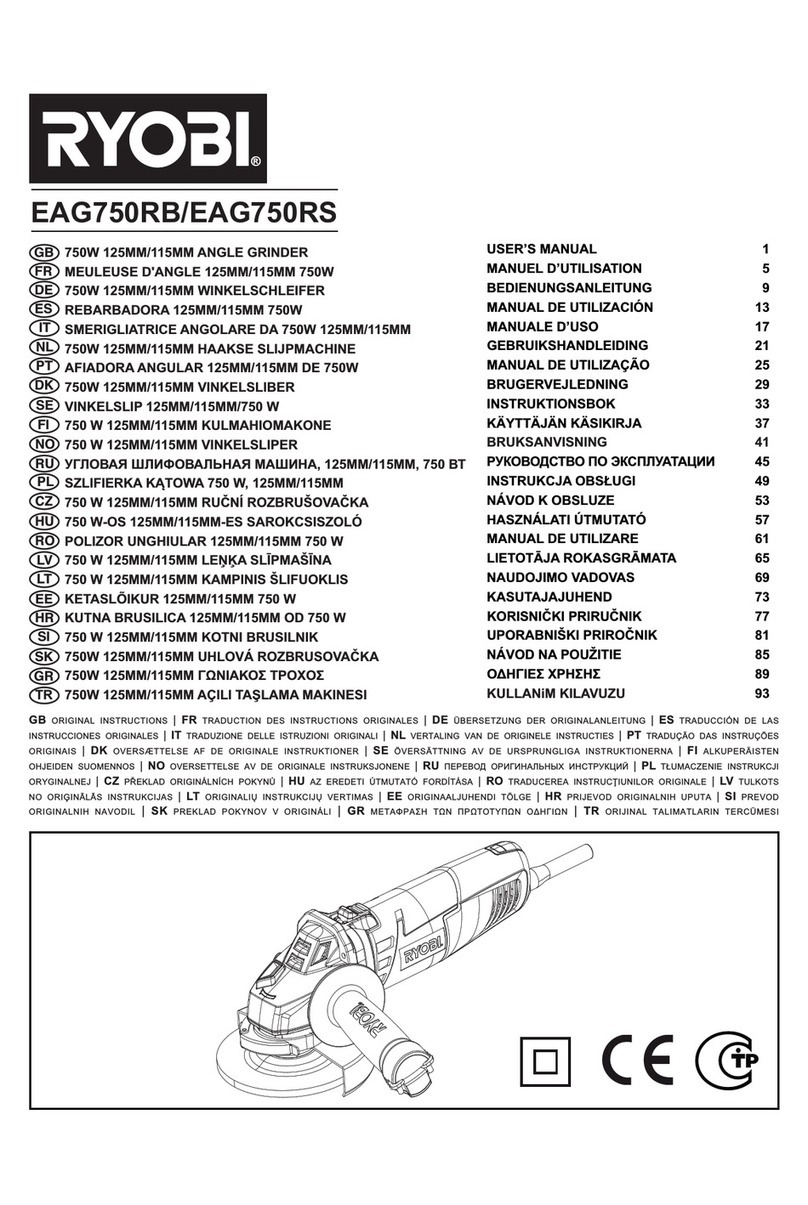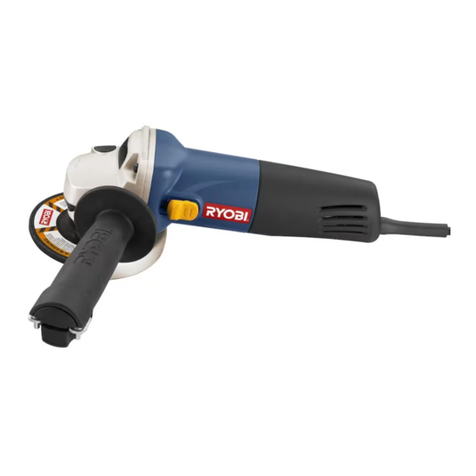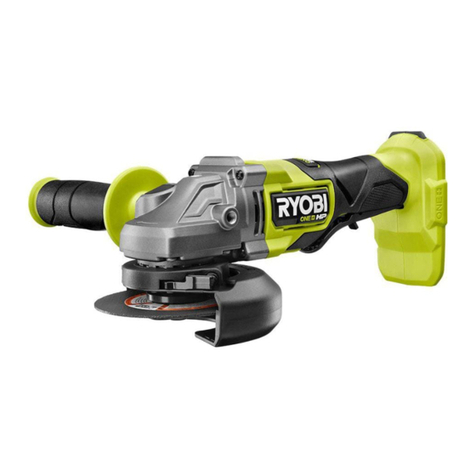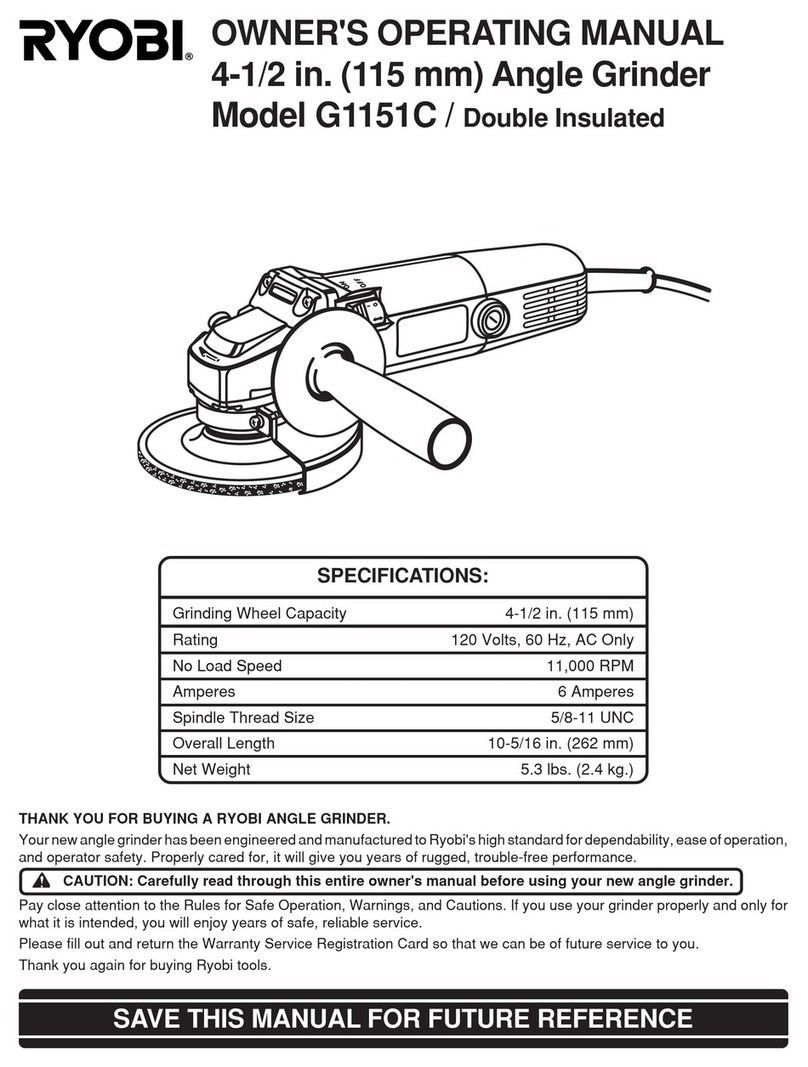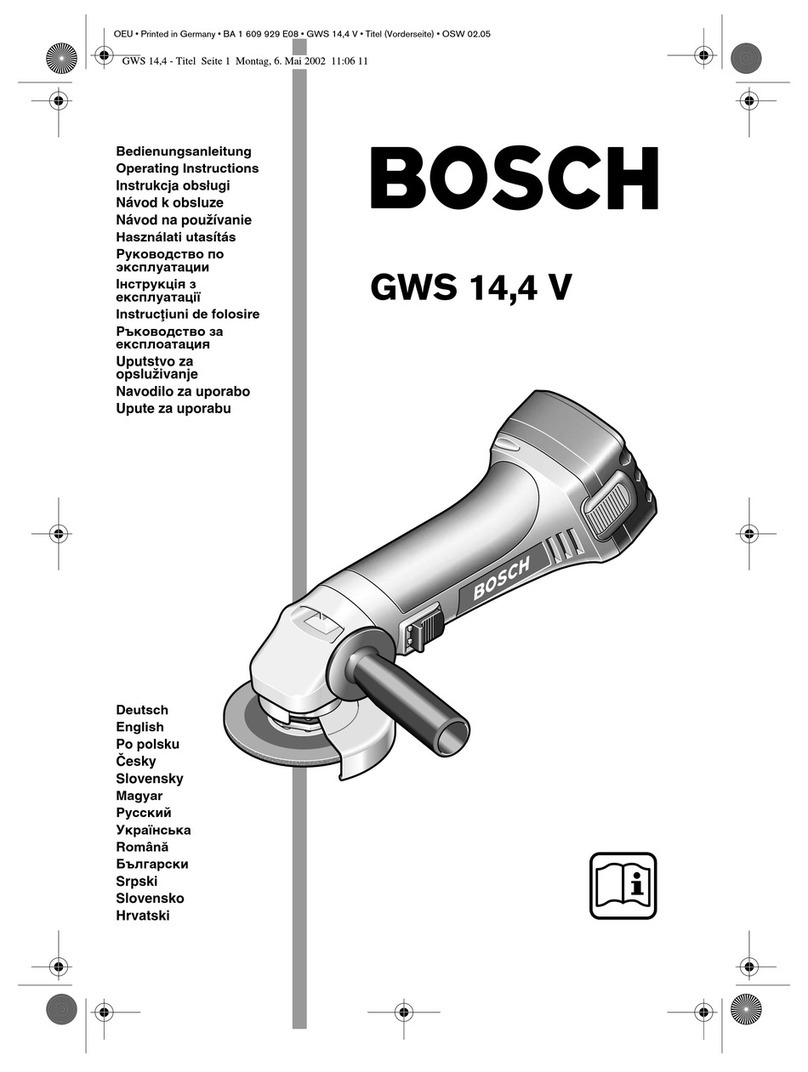
2
comfortable posture while maintaining secure footing
and avoiding awkward or off-balanced postures. The
operator should change posture during extended
tasks; this can help avoid discomfort and fatigue.
■If the operator experiences symptoms, such as
persistent or recurring discomfort, pain, throbbing,
aching, tingling, numbness, burning sensations or
stiffness, these warning signs should not be ignored.
The operator should tell the employer and consult a
qualified health professional.
ACCESSORY HAZARDS
■Disconnect the grinder from the energy supply before
fitting or changing the inserted tool or accessory.
■Only use sizes and types of accessories and
consumables that are recommended by the grinder
manufacturer; do not use other types or sizes of
accessories or consumables.
■Ensure that the dimensions of the abrasive product
are compatible with the grinder and that the abrasive
product fits the spindle.
■Ensure that the thread type and size of the abrasive
product exactly match the thread type and size of the
spindle.
■Inspect the abrasive product before use. Do not use
abrasive products which can (possibly) have been
dropped or which are chipped, cracked or otherwise
defective.
■Ensure that the abrasive product is correctly mounted
and tightened before use and run the grinder at no-
load speed for at least 1 min in a safe position; stop
immediately if considerable vibration or other defects
are detected and determine the cause of these defects.
■Prevent the spindle end from touching the bottom of
the hole of cups, cones or plugs with threaded holes,
intended to be mounted on machine spindles, by
checking their dimensions and other relevant data.
■Where abrasive products are supplied or used with
reducing adaptors or bushings, the user shall ensure
that the adaptor or bushing does not contact the face
of the flange and that the clamping force provides
sufficient rotational driving action to prevent the
abrasive product from slipping.
■In cases where flanges are supplied for several types
or sizes of abrasive, always fit the correct flange(s) for
the abrasive being used.
■Avoid direct contact with the inserted tool during and
after use as it can be hot or sharp.
■Store and handle the abrasive product with care in
accordance with manufacturer’s instructions.
WORKPLACE HAZARDS
■Slips, trips and falls are major causes of workplace
injury. Be aware of slippery surfaces caused by use of
the tool and also of trip hazards caused by the air line
or hydraulic hose.
■Proceed with care in unfamiliar surroundings. There
can be hidden hazards, such as electricity or other
utility lines.
■This grinder is not intended for use in potentially
explosive atmospheres and is not insulated from
coming into contact with electric power.
■Ensure that there are no electrical cables, gas pipes,
etc., which can cause a hazard if damaged by use of
the tool.
DUST AND FUME HAZARDS
■Dusts and fumes generated while using grinders can
cause ill health (for example cancer, birth defects,
asthma and/or dermatitis); risk assessment of these
hazards and implementation of appropriate controls
for these hazards are essential.
■Risk assessment should include dust created by the
use of the tool and the potential for disturbing existing
dust.
■Operate and maintain the grinder as recommended in
these instructions, to minimize dust or fume emissions.
■Direct the exhaust so as to minimize disturbance of
dust in a dust-filled environment.
■Where dust or fumes are created, the priority shall be
to control them at the point of emission.
■All integral features or accessories for the collection,
extraction or suppression of airborne dust or fumes
should be correctly used and maintained in accordance
with the manufacturer’s instructions.
■Select, maintain and replace the consumable/inserted
tool as recommended in the instructions, to prevent an
unnecessary increase in dust or fumes.
■Use respiratory protection in accordance with
the employer’s instructions and as required by
occupational health and safety regulations.
■Working with certain materials creates emissions
of dust and fumes, causing a potentially explosive
environment.
NOISE HAZARDS
■Exposure to high noise levels can cause permanent,
disabling hearing loss and other problems, such
as tinnitus (ringing, buzzing, whistling or humming
in the ears). Therefore, a risk assessment and the
implementation of appropriate controls for these
hazards are essential.
■Appropriate controls to reduce the risk may include
actions, such as damping materials, to prevent
workpieces from “ringing”.
■Use hearing protection in accordance with employer’s
instructions and as required by occupational health
and safety regulations.
■Operate and maintain the grinder as recommended in
the instructions handbook to prevent an unnecessary
increase in noise.

